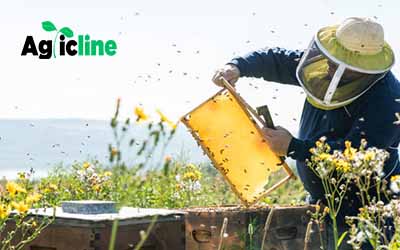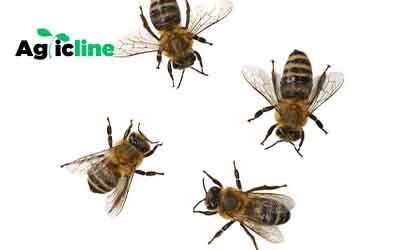In the realm of modern agriculture, the practice of grazing management holds a pivotal role, shaping the landscape of sustainable farming and livestock rearing.
At the heart of this practice is continuous grazing, a traditional yet dynamic approach that has stood the test of time, adapting to the evolving needs of both farmers and the environment.
This method, characterized by allowing livestock unfettered access to a grazing area for extended periods, contrasts sharply with rotational systems where animals are moved periodically to fresh pastures.
The significance of continuous grazing extends beyond mere convenience. It encapsulates a harmonious blend of economic viability, environmental stewardship, and animal welfare, making it a compelling choice for many farmers.
This approach, when executed with precision and care, can transform the way pasture lands are managed, leading to profound benefits not only for the livestock but also for the land they graze upon.
See Also; What are the 10 problems of agriculture?
4 Advantages of continuous grazing
- Simplicity and Ease of Management
- Lower Infrastructure and Labor Costs
- Improved Animal Welfare
- Potential Environmental Benefits
1. Simplicity and Ease of Management
One of the most compelling advantages of continuous grazing is its simplicity and ease of management, qualities that have made it a favored method among farmers for generations.
Unlike rotational grazing, which requires meticulous planning and frequent movement of livestock, continuous grazing operates on the principle of minimal intervention.
This straightforward approach offers several tangible benefits to farmers, making it an attractive option for both small-scale and large-scale agricultural operations.
- Uncomplicated Pasture Management
At its core, continuous grazing allows animals to graze freely over a large area for an extended period.
This method eliminates the need for complex scheduling and intensive monitoring required in rotational systems.
Farmers can focus more on other critical aspects of their operations, knowing that their livestock has constant access to forage.
Read Also; Agroforestry in Nigeria
This ease of management is particularly beneficial for those with limited resources or those who prefer a more hands-off approach to pasture management.
- Reduced Need for Infrastructure
Continuous grazing systems often require less infrastructure compared to rotational systems. In rotational grazing, substantial investment is needed for fencing, water systems, and facilities to move and manage livestock across different paddocks.
On the other hand, continuous grazing typically necessitates a simpler setup, with fewer fences and less elaborate water distribution systems.
- Flexibility and Adaptability
The beauty of continuous grazing lies in its flexibility. It can be easily adapted to various types of landscapes and farm sizes.
Whether it’s a flat, rolling terrain or a more diverse landscape, continuous grazing can be implemented without the extensive modification of land. This adaptability makes it a viable option for farms in different geographical locations with varying environmental conditions.
- Time and Labor Savings
Continuous grazing can significantly reduce the labor required for moving and managing livestock.
In rotational systems, farmers must spend considerable time and effort in moving animals, adjusting fences, and monitoring pasture conditions in different paddocks.
- Real-World Examples
Many farmers have successfully implemented continuous grazing and reaped its benefits.
For instance, a cattle farm in the midwestern United States reported a noticeable reduction in labor hours and operational costs after transitioning from a rotational to a continuous grazing system.
The farmers observed not only a decrease in the time spent on pasture management but also an improvement in the overall health and condition of their livestock, attributing it to the stress-free environment provided by continuous grazing.
2. Lower Infrastructure and Labor Costs
A critical advantage of continuous grazing lies in its potential to significantly lower both infrastructure and labor costs.
This aspect is especially crucial in the agricultural industry, where profit margins can be narrow, and efficiency is key to sustainability.
- Reduced Infrastructure Investment
In continuous grazing systems, the need for extensive fencing, water systems, and other infrastructure is notably less than in rotational or intensive grazing systems.
Rotational grazing often requires multiple paddocks, each needing its own set of resources like fencing and water supply.
- Minimized Maintenance Costs
Beyond the initial investment, continuous grazing systems typically incur lower maintenance costs. With fewer fences and less complex water systems, the time and money spent on repairs and upkeep are substantially reduced.
This simplicity translates into direct cost savings for the farmer. In rotational systems, regular fence repairs, water system checks, and other maintenance tasks can accumulate significant costs over time, impacting the overall profitability of the farm.
- Labor Efficiency
Labor costs constitute a significant portion of farm expenses. Continuous grazing inherently requires less labor, as there is no need for frequent moving of livestock between paddocks.
This reduced labor requirement is not just a cost-saving measure but also allows farm workers to focus on other important tasks, such as monitoring animal health, maintaining equipment, or engaging in value-added activities like direct marketing of farm products.
- Long-term Financial Sustainability
The financial sustainability of a farm is crucial for its long-term success. By adopting a continuous grazing system, farmers can achieve a more sustainable financial model.
The reduction in infrastructure and labor costs contributes to lower operational expenses, improving the farm’s overall financial health.
This economic resilience is particularly important in times of market fluctuations and environmental challenges, where cost-efficiency can be the difference between a farm thriving or struggling.

3. Improved Animal Welfare
One of the often-overlooked yet critical advantages of continuous grazing is its positive impact on animal welfare.
This aspect is of paramount importance to both ethical and practical considerations in agriculture.
- A Natural and Stress-Free Environment
Continuous grazing allows animals to express their natural behaviors and instincts. Livestock have the freedom to move, graze, and rest as they please, mimicking their wild ancestors’ patterns.
This freedom reduces stress and anxiety among the animals, leading to improved overall health and contentment.
- Reduced Competition for Resources
In continuous grazing systems, animals have constant access to forage without the competition associated with rotational systems.
In rotational grazing, there can be a rush for fresh pasture when animals are moved to a new paddock, leading to aggressive behavior and increased stress.
- Enhanced Diet and Nutrition
Continuous grazing allows animals to select a wider variety of forage species throughout the grazing season. This diversity in their diet can lead to better overall nutrition, as different plants provide varying nutrients.
In rotational systems, animals may not have access to a diverse range of forage due to the cyclical nature of paddock rotations. This can result in nutritional imbalances, which can impact the health and productivity of livestock.
- Reduced Risk of Overgrazing
Properly managed continuous grazing systems can reduce the risk of overgrazing compared to some forms of rotational grazing.
See Also; Does companion planting tomatoes and cucumbers work?
When rotational systems move animals to fresh paddocks too quickly, there’s a risk of overgrazing in the early paddocks, leading to soil erosion and decreased forage quality.
- Improved Animal Health
The stress-free and natural environment provided by continuous grazing has been linked to improved animal health.
Animals in continuous grazing systems are less prone to stress-related illnesses, such as respiratory issues and digestive problems.
- Ethical Considerations
From an ethical standpoint, continuous grazing aligns with the principles of humane animal treatment.
It prioritizes the welfare and happiness of farm animals, which is increasingly important to consumers and regulatory bodies.
Farms that prioritize animal welfare through continuous grazing may gain a competitive edge and meet the demands of ethically conscious consumers.
4. Potential Environmental Benefits
Continuous grazing, when managed responsibly, has the potential to bring about significant environmental benefits.
This advantage is especially important in the context of modern agriculture, where sustainability and conservation are key considerations.
- Soil Health Improvement
Continuous grazing can enhance soil health when executed with proper management practices.
Grazing animals can help break up soil compaction by their movement and trampling, allowing for improved water infiltration and root growth. Additionally, their manure serves as a natural fertilizer, enriching the soil with essential nutrients.
Continuous grazing encourages a balance between forage growth and consumption, preventing soil erosion and degradation.
- Biodiversity Conservation
Well-managed continuous grazing systems often promote greater biodiversity in pastures. By allowing for diverse forage species to coexist and thrive, these systems create habitats for a variety of plant and animal species.
This increased biodiversity can have cascading positive effects on the ecosystem, from supporting pollinators to providing habitat for beneficial insects that help control pests.
- Reduced Habitat Fragmentation
Continuous grazing minimizes the need for frequent changes in paddocks and reduces habitat fragmentation.
In rotational grazing systems, the frequent movement of livestock can disrupt natural habitat corridors and negatively impact wildlife movement.
Continuous grazing allows for larger, more contiguous areas of pasture, which can facilitate wildlife movement and preserve natural ecosystems.
- Carbon Sequestration
Continuous grazing, especially when combined with regenerative grazing practices, can contribute to carbon sequestration. Properly managed pastures sequester carbon dioxide from the atmosphere and store it in the soil.
This has the potential to mitigate climate change by reducing greenhouse gas emissions. Continuous grazing systems that prioritize soil health and long-term sustainability can play a role in carbon sequestration efforts.
- Reduced Fossil Fuel Use
Continuous grazing requires fewer resources for infrastructure and labor, which can result in reduced fossil fuel use.
In rotational grazing systems, the frequent movement of animals and the need for additional fencing and water systems can increase the energy footprint of the farm.
Continuous grazing’s simplicity and efficiency align with sustainable farming practices that aim to reduce environmental impact.
- Sustainable Water Management
Continuous grazing systems often involve centralized water sources, which can promote more efficient water use compared to multiple water systems in rotational grazing.
Properly designed water systems in continuous grazing can minimize water wastage and contamination, contributing to sustainable water management on farms.
Challenges and Considerations in Continuous Grazing
While continuous grazing offers numerous advantages, it is not without its challenges and considerations.
Like any agricultural practice, successful implementation requires careful planning, monitoring, and adaptation.
It’s essential to acknowledge and address these challenges to maximize the benefits of continuous grazing while mitigating potential drawbacks. Here, we explore some of the key challenges and considerations associated with continuous grazing:
Overgrazing Risk
One of the primary concerns in continuous grazing systems is the risk of overgrazing if not properly managed.
Overgrazing occurs when livestock consume forage faster than it can regenerate, leading to soil erosion, reduced forage quality, and long-term pasture degradation.
To mitigate this risk, farmers must monitor forage availability, implement rotational rest periods, or employ regenerative grazing practices that promote healthy plant growth.
Pasture Quality and Diversity
Continuous grazing may lead to selective grazing, where animals preferentially consume certain plant species while neglecting others.
This can result in reduced pasture diversity and overall forage quality. Farmers must monitor pasture composition and consider strategies such as rotational resting or introducing diverse forage species to maintain a balanced and nutritious diet for livestock.
Parasite Management
Continuous grazing can increase the risk of parasitic infections in livestock, as they have prolonged exposure to parasites in the pasture.
Farmers must implement effective parasite management strategies, such as regular deworming, rotational paddock rest, or using alternative forage species that can help reduce parasite loads naturally.
Drought and Forage Availability
During periods of drought or low rainfall, continuous grazing systems may face challenges related to forage availability.
Without rotational paddock changes, pastures can become overgrazed and struggle to recover. Farmers in regions prone to drought must have contingency plans in place, such as providing supplementary feed or adjusting stocking rates to account for reduced forage growth.
Weed Control
Continuous grazing may also pose challenges in weed control. Without periodic disruption of pasture through rotational grazing, weed populations can thrive.
Farmers need to incorporate effective weed management practices, such as mowing, herbicide application, or targeted grazing with goats or sheep to control undesirable plant species.
Soil Health Maintenance
Maintaining soil health in continuous grazing systems requires careful management. Continuous trampling and grazing can lead to soil compaction in high-traffic areas.
Farmers should employ strategies like rotational resting, aerating, and soil testing to ensure soil fertility and prevent degradation.
Monitoring and Adaptation
Continuous grazing systems demand vigilant monitoring and adaptability. Farmers must keep a close eye on pasture conditions, animal health, and forage availability.
Regular assessments can help identify potential issues early, allowing for timely adjustments in stocking rates, rest periods, or grazing strategies.
Education and Training
Farmers considering a transition to continuous grazing may require education and training in this grazing method’s best practices.
Resources, workshops, and expert guidance can help farmers make informed decisions and maximize the benefits of continuous grazing while addressing potential challenges.
Concluding remark on Advantages of continuous grazing
Continuous grazing, with its numerous advantages and potential benefits, emerges as a compelling pasture management strategy for today’s farmers and ranchers.
Throughout this exploration, we’ve delved into the multifaceted advantages that make continuous grazing a viable option in modern agriculture.
We began by introducing continuous grazing, highlighting its simplicity and ease of management, a feature often underappreciated in comparison to more complex rotational systems.
We then discussed how continuous grazing can significantly lower infrastructure and labor costs, providing an economic edge to farming operations of all scales.
Moving on, we explored the often-overlooked advantage of improved animal welfare.
Continuous grazing allows livestock to thrive in a natural and stress-free environment, promoting not only healthier animals but also aligning with ethical considerations that resonate with today’s consumers.
The environmental benefits of continuous grazing were another critical aspect of our exploration.
When managed sustainably, continuous grazing can enhance soil health, conserve biodiversity, reduce habitat fragmentation, contribute to carbon sequestration, and promote responsible water management.
We also addressed the challenges and considerations associated with continuous grazing, emphasizing the need for careful management, monitoring, and adaptation to maximize its advantages while mitigating potential drawbacks.
FAQs (Frequently Asked Questions) About Continuous Grazing
These FAQs aim to provide clarity and guidance on various aspects of continuous grazing, including its benefits, challenges, and implementation.
What is continuous grazing, and how does it differ from rotational grazing?
Continuous grazing is a pasture management strategy in which livestock have uninterrupted access to a specific grazing area for an extended period.
In contrast, rotational grazing involves dividing a pasture into smaller paddocks and moving livestock between these paddocks in a planned sequence.
The key difference is that continuous grazing allows animals to remain in the same area continuously, while rotational grazing involves regular paddock rotation to manage forage growth and rest periods.
What are the advantages of continuous grazing over rotational grazing?
Continuous grazing offers several advantages, including simplicity and ease of management, lower infrastructure and labor costs, improved animal welfare, and potential environmental benefits.
It requires less intensive monitoring and infrastructure, making it accessible to a wide range of farmers.
Does continuous grazing have any disadvantages or challenges?
Yes, continuous grazing has challenges that need to be addressed. These include the risk of overgrazing if not properly managed, potential issues with pasture quality and diversity, and increased exposure to parasites for livestock.
Proper planning, monitoring, and adaptation are essential to mitigate these challenges.
Can continuous grazing be sustainable and environmentally friendly?
Yes, continuous grazing can be sustainable and environmentally friendly when managed responsibly.
Practices such as rotational resting, regenerative grazing, and promoting biodiversity can enhance soil health, conserve natural habitats, and contribute to carbon sequestration, aligning with sustainability goals.
Is continuous grazing suitable for all types of livestock?
Continuous grazing can be adapted for various types of livestock, including cattle, sheep, goats, and horses.
However, the suitability of continuous grazing may vary depending on factors such as the specific livestock species, pasture conditions, and management goals. It’s essential to tailor the grazing system to the needs of the livestock and the farm.
How can I transition from rotational grazing to continuous grazing on my farm?
Transitioning to continuous grazing requires careful planning and gradual implementation. Start by assessing your current pasture conditions and livestock needs.
Adjust fencing and water systems as needed and monitor forage growth and livestock behavior during the transition.
Consider consulting with experts or organizations specializing in continuous grazing for guidance.
Are there financial incentives or support programs for adopting continuous grazing practices?
Depending on your location, there may be financial incentives, grants, or support programs available for farmers adopting sustainable grazing practices, including continuous grazing.
Check with your local agricultural agencies, conservation organizations, or government programs to explore available incentives and resources.
Can continuous grazing be integrated with other sustainable farming practices?
Yes, continuous grazing can be integrated with various sustainable farming practices, such as regenerative agriculture, organic farming, and conservation efforts.
Combining continuous grazing with practices like cover cropping, reduced tillage, and wildlife habitat preservation can create a holistic approach to sustainable land management.
Where can I find more information and resources on continuous grazing?
You can find more information and resources on continuous grazing through agricultural publications, research institutions, and organizations dedicated to sustainable farming practices.
Recommendations
Environmental benefits of urban farming
Best farming technology in India



